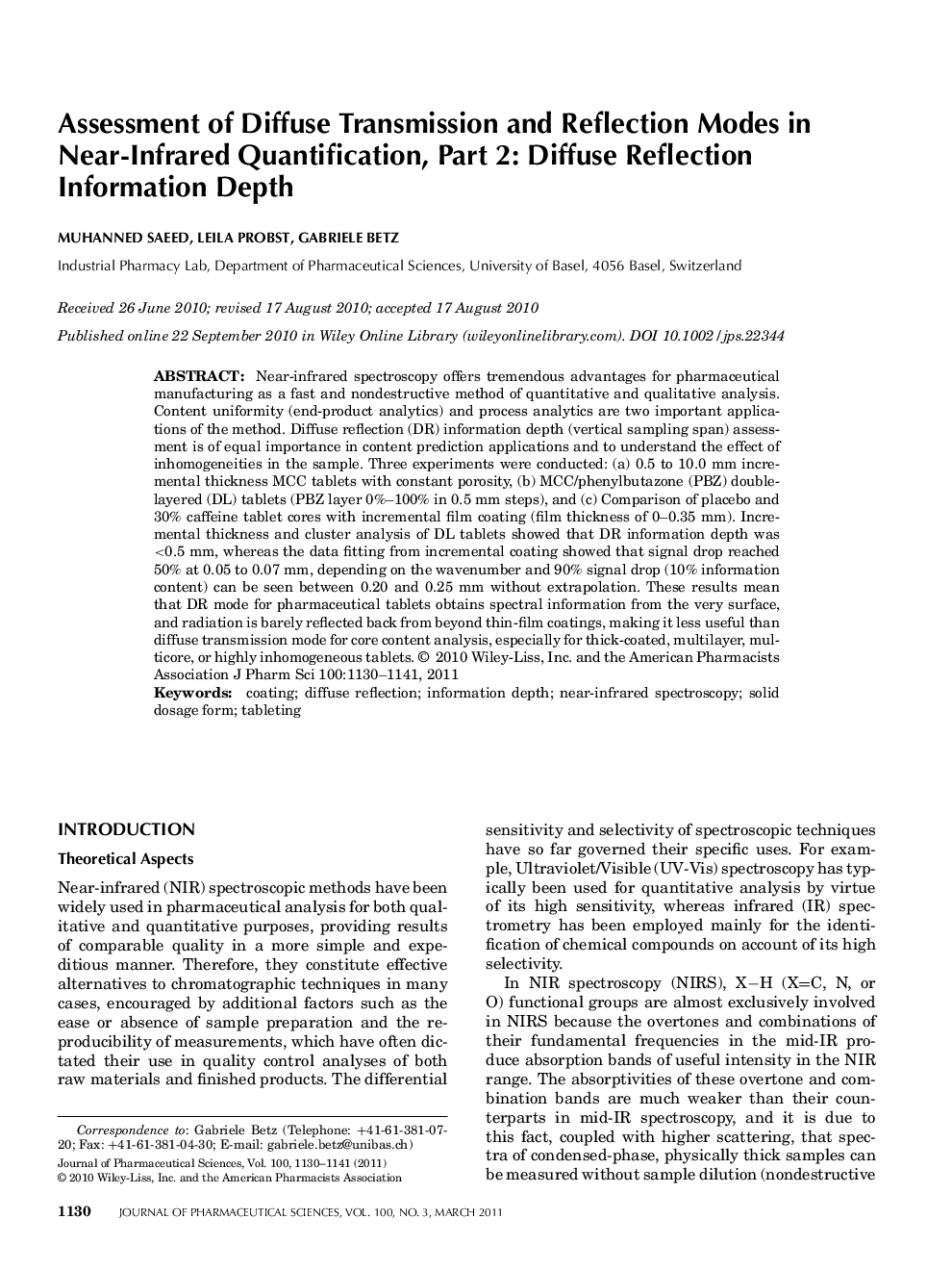| Article ID | Journal | Published Year | Pages | File Type |
|---|---|---|---|---|
| 2485826 | Journal of Pharmaceutical Sciences | 2011 | 12 Pages |
Abstract
Near-infrared spectroscopy offers tremendous advantages for pharmaceutical manufacturing as a fast and nondestructive method of quantitative and qualitative analysis. Content uniformity (end-product analytics) and process analytics are two important applications of the method. Diffuse reflection (DR) information depth (vertical sampling span) assessment is of equal importance in content prediction applications and to understand the effect of inhomogeneities in the sample. Three experiments were conducted: (a) 0.5 to 10.0Â mm incremental thickness MCC tablets with constant porosity, (b) MCC/phenylbutazone (PBZ) double-layered (DL) tablets (PBZ layer 0%-100% in 0.5Â mm steps), and (c) Comparison of placebo and 30% caffeine tablet cores with incremental film coating (film thickness of 0-0.35Â mm). Incremental thickness and cluster analysis of DL tablets showed that DR information depth was <Â 0.5Â mm, whereas the data fitting from incremental coating showed that signal drop reached 50% at 0.05 to 0.07Â mm, depending on the wavenumber and 90% signal drop (10% information content) can be seen between 0.20 and 0.25Â mm without extrapolation. These results mean that DR mode for pharmaceutical tablets obtains spectral information from the very surface, and radiation is barely reflected back from beyond thin-film coatings, making it less useful than diffuse transmission mode for core content analysis, especially for thick-coated, multilayer, multicore, or highly inhomogeneous tablets.
Keywords
Related Topics
Health Sciences
Pharmacology, Toxicology and Pharmaceutical Science
Drug Discovery
Authors
Muhanned Saeed, Leila Probst, Gabriele Betz,
